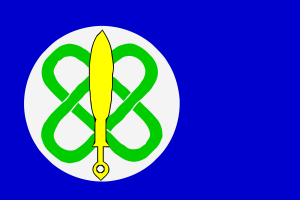Difference between revisions of "Language/Yoruba/Grammar/How-to-Use-Be"
m (Quick edit) |
m (Quick edit) |
||
| Line 51: | Line 51: | ||
}} | }} | ||
<hr>➡ If you have any questions, please ask them in the comments section below.<br>➡ Feel free to edit this wiki page if you think it can be improved. 😎 | <hr>➡ If you have any questions, please ask them in the comments section below.<br>➡ Feel free to edit this wiki page if you think it can be improved. 😎 | ||
==Videos== | |||
===7 TIPS FOR LEARNING YORUBA || HOW TO MAKE YOUR ...=== | |||
<youtube>https://www.youtube.com/watch?v=Eq5CfcQ67Ig</youtube> | |||
===Yoruba Tones - Àmìn Ohùn | How To Pronounce Words Using The ...=== | |||
<youtube>https://www.youtube.com/watch?v=NVF766dVaAQ</youtube> | |||
{{Yoruba-Page-Bottom}} | {{Yoruba-Page-Bottom}} | ||
Revision as of 21:44, 28 February 2023
Hi Yoruba learners! 😊
In this lesson, we will learn how to use the verb "be" in Yoruba. This is an important part of Yoruba grammar and it is essential for forming sentences correctly. We will look at the different forms of the verb "be" and how to use them in different contexts.
The verb "be" is used to express existence, identity, location, and other states of being. In Yoruba, the verb "be" is conjugated differently depending on the subject of the sentence. The verb "be" can be conjugated in the present, past, and future tenses.
The present tense of the verb "be" is formed by adding the suffix "-ni" to the verb stem. For example, the present tense of the verb "to be" is "bẹni".
The past tense of the verb "be" is formed by adding the suffix "-le" to the verb stem. For example, the past tense of the verb "to be" is "bẹle".
The future tense of the verb "be" is formed by adding the suffix "-ko" to the verb stem. For example, the future tense of the verb "to be" is "bẹko".
Let's look at some examples of how to use the verb "be" in different contexts.
||Yoruba||Pronunciation||English Translation|| |Omo naa ni omo ọlọrun.|O-mo na-a ni o-mo o-lo-run.|This person is a child of God.| |Omo naa le omo ọlọrun.|O-mo na-a le o-mo o-lo-run.|This person was a child of God.| |Omo naa ko omo ọlọrun.|O-mo na-a ko o-mo o-lo-run.|This person will be a child of God.|
- Person 1: Bẹni omo ọlọrun? (Are you a child of God?)
- Person 2: Bẹni. (Yes.)
The verb "be" can also be used to express location. For example:
||Yoruba||Pronunciation||English Translation|| |Omo naa ni yi.|O-mo na-a ni yi.|This person is here.| |Omo naa le yi.|O-mo na-a le yi.|This person was here.| |Omo naa ko yi.|O-mo na-a ko yi.|This person will be here.|
- Person 1: Bẹni yi? (Are you here?)
- Person 2: Bẹni. (Yes.)
The verb "be" can also be used to express identity. For example:
||Yoruba||Pronunciation||English Translation|| |Omo naa ni omo ọmọ ḿbàpá.|O-mo na-a ni o-mo o-mo m-ba-pa.|This person is a son of the king.| |Omo naa le omo ọmọ ḿbàpá.|O-mo na-a le o-mo o-mo m-ba-pa.|This person was a son of the king.| |Omo naa ko omo ọmọ ḿbàpá.|O-mo na-a ko o-mo o-mo m-ba-pa.|This person will be a son of the king.|
- Person 1: Bẹni omo ọmọ ḿbàpá? (Are you a son of the king?)
- Person 2: Bẹni. (Yes.)
In conclusion, the verb "be" is an important part of Yoruba grammar. It is used to express existence, identity, location, and other states of being. The verb "be" is conjugated differently depending on the subject of the sentence and can be conjugated in the present, past, and future tenses.
➡ If you have any questions, please ask them in the comments section below.
➡ Feel free to edit this wiki page if you think it can be improved. 😎
Videos
7 TIPS FOR LEARNING YORUBA || HOW TO MAKE YOUR ...
Yoruba Tones - Àmìn Ohùn | How To Pronounce Words Using The ...
